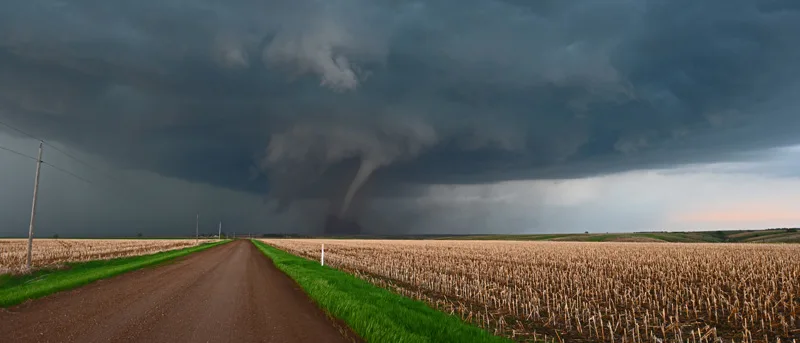
Chasing tornadoes comes down to balancing science with safety
Chasing tornadoes is no game – it means balancing science with safety.
The goal of every storm chaser is to get into the wind, to feel the power of an invisible hand pushing at your body, to see a funnel cloud snaking down from a spinning cloud base.
Things may be changing in Tornado Alley. Climate change is reshaping one of the most storm-prone areas of our planet. My co-host, Jaclyn Whittal, and I headed down for another year of chasing, but this time it wasn’t just a chase, we were after answers about the future of Tornado Alley.

The deep grey of the core of a rotating thunderstorm (known as a supercell) is offset by the clear area (the main updraft/inflow region) off to its left. While it might seem that the core is the more dangerous part of the storm, it’s actually the clear area that will give rise to a tornado.
Tune in to full episodes of STORM-HUNTERS on The Weather Network, Sunday at 7pm and 10pm ET & PT.
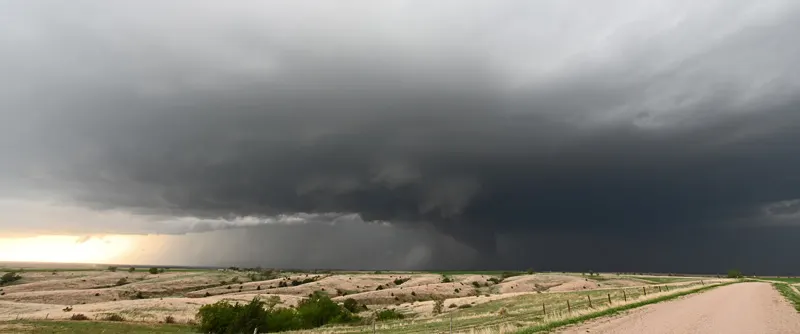
As the supercell begins to organize in earnest, a circular wall cloud forms under the axis of rotation. Jaclyn was the first to point out the white mist below the wall cloud was likely the first sign of a developing tornado.
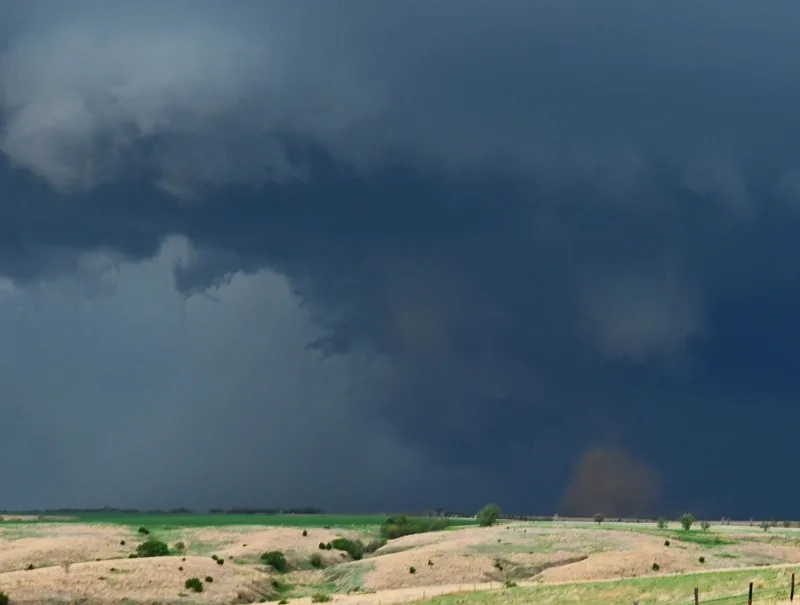
As the swirl of air organizes, it goes from a white blur under the wall cloud to a brown cloud, indicating that it's now a true tornado. All that a tornado is, is a rotating column of air, nothing more. You don’t need the classic condensation funnel for it to be called a tornado.
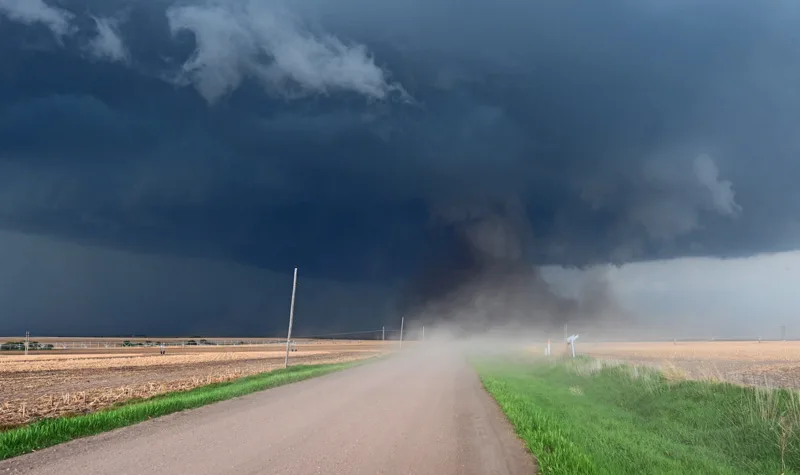
At this point, the tornado is hard to see, but the gray/brown mess crossing the road in front of us is the tornado itself. The funnel is obscured by the debris being lofted by the rapid spin of the air in the tornado.
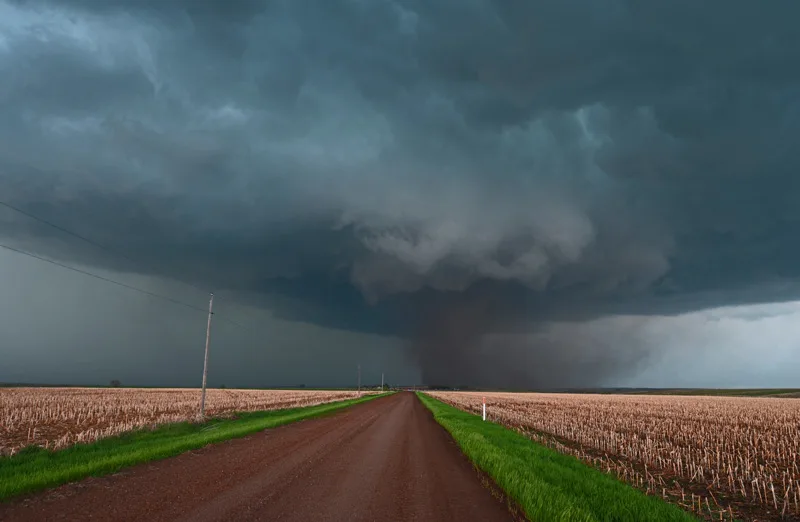
The funnel is still obscured by the cloud of dirt and dust surrounding the tornado. However, there’s now a hint of the white column that outlines the main column of the tornado itself.
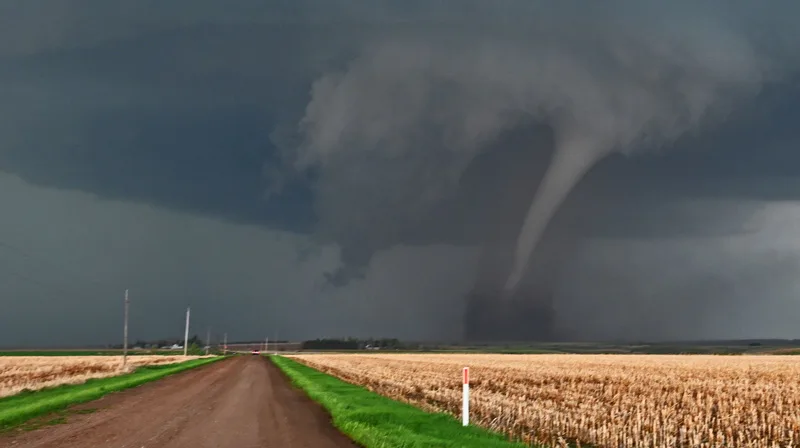
Now free of the initial dust and dirt veil, the tornado is fully visible. One of the characteristics of the tornado is the smooth (known as laminar) sides of the funnel. This is indicative of the fast, organized nature of the winds in the tornado. Turbulent or unorganized flow would cause the edges of the funnel to look ragged or shredded.
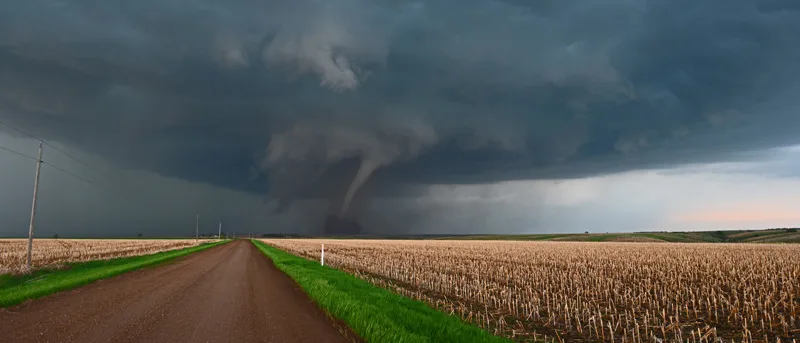
Looking at a wide shot of the storm, the circular nature of the supercell is evident. As Jaclyn and I are to the southwest of the tornado, we are underneath what is called the rain-free base. Supercells are very organized and being where we are may seem dangerous, but as the storm is moving away from us, it’s a very safe position to be in.
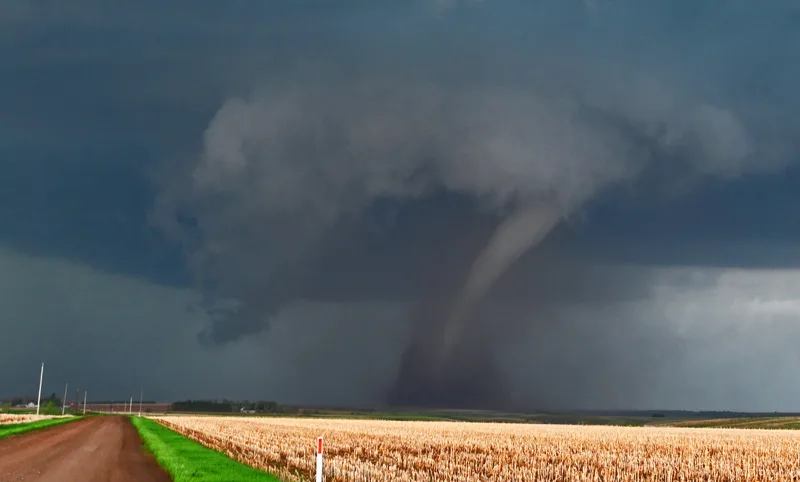
A tight look at the tornado reveals a debris ring circling the lower part of the tornado. This one is composed mostly of dirt and dust, but very strong tornadoes that have struck human-inhabited areas can loft whole buildings into the debris ring.
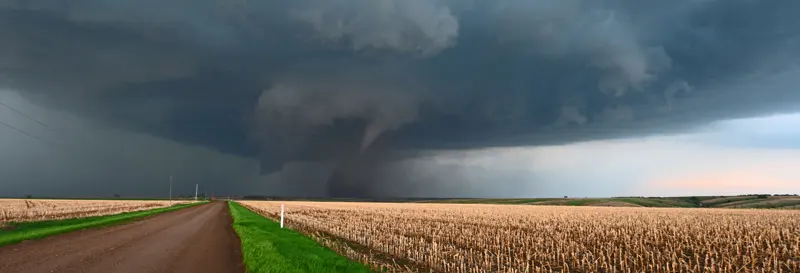
Despite the destruction that tornadoes can bring, they are very rare and finding one churning over an empty field is the goal of almost every storm chaser. There is a certain beauty to these ephemeral aspects of the natural world.
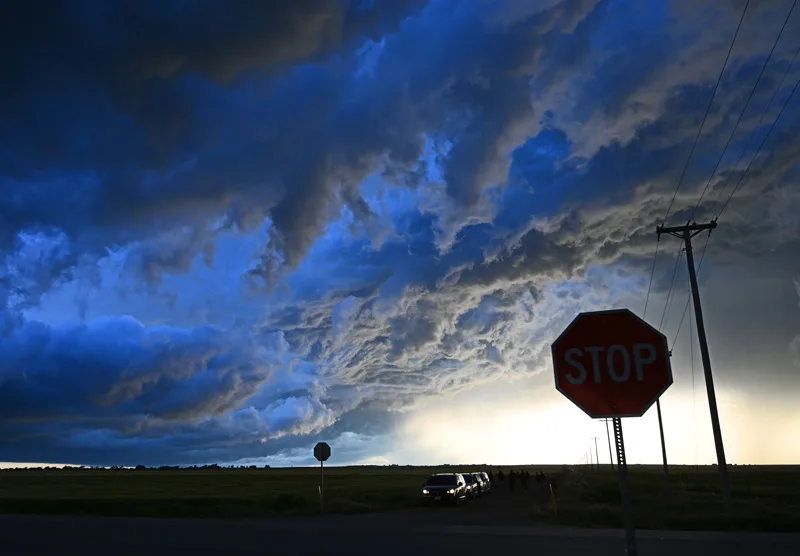
Storms tend to fade as the sun sets as their source of energy disappears over the horizon, but they leave spectacular colour and structure in the sky.
WATCH BELOW: IN THE MIDST OF AN OUTBREAK
All photos Copyright of Mark Robsinson










